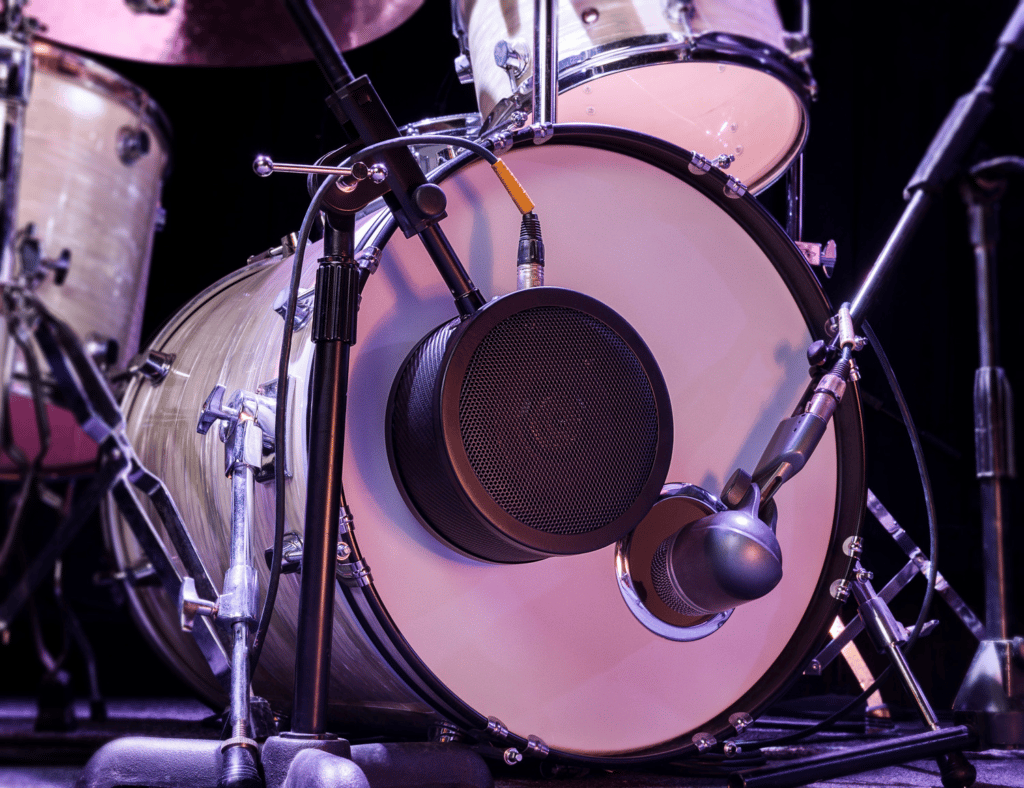Analysis
How To Convert Headphones Into A Microphone
Headphones and microphones are both transducers, converting one form of energy to another. Specifically, they convert between acoustic and electrical energy. The way they each perform this conversion is based on the same principle, and that’s what we’re exploring today.
This blog is sponsored by the Audio University Membership Community. Learn more and sign up using this link.
First, let’s get a basic understanding of how a speaker works. A moving coil speaker uses a coil of wire in close proximity to a fixed magnet. The magnet’s magnetic field remains constant, but when an electric current is sent through the coil of wire, a magnetic field forms around the wire, constantly changing with the audio signal from the amplifier. The interaction between the two magnetic fields causes the lightweight coil of wire to move.
To illustrate this more clearly, imagine a strip of copper on a piece of cardboard connected to an amplifier. Sending an audio signal from a computer to the amplifier and through the strip of copper doesn’t produce sound initially. Sound requires vibration, and while there is a magnetic field around the copper strip, it isn’t interacting with enough force to cause vibration. However, if we were to hold the copper near a strong magnet, the magnetic fields would start to interact, causing the low-mass copper and cardboard to vibrate slightly with the electric current.
For more output, we could increase the audio signal’s amplitude or increase the amount of copper within the magnet’s magnetic field by making a coil of copper tape. This increased interaction would result in more vibration of the cardboard.
Speakers operate on this same principle but typically use a 3-dimensional coil inside a small gap between the north and south poles of a fixed magnet.
Music is a complex signal with various frequencies. To simplify, consider a direct current (DC) from a battery. Touching the speaker’s red wire to the battery’s positive terminal and the black wire to the negative terminal makes the speaker cone move outward. Reversing the wires makes the cone move inward. This DC signal is technically 0 Hz. We hear a pop because the speaker can’t move instantaneously, causing higher-frequency vibrations. Once in its final position, we hear nothing. Theoretically, switching connections rapidly could create an audible tone, but it’s impractical for humans who only hear down to about 20 Hz.
Consider a transducer connected to a signal generator outputting alternating current (AC). Playing a very low-frequency tone, such as 4 Hz, through this circuit would cause visible coil movement at that frequency. At higher frequencies, like 20 Hz, the motion becomes too fast to see, and we reach the human hearing range. While this transducer isn’t very efficient as a speaker due to its small piston, a real speaker includes a cone to enhance acoustic energy conversion.
The cone allows for more efficient conversion of electrical and mechanical energy into acoustic energy. Adding a lightweight piece of material, such as a cone, ensures better conversion and louder sound.
The core idea is that moving coil speakers and microphones are essentially the same. When a coil of wire moves within a magnetic field, it generates a current. Connecting this transducer to a microphone input on an audio interface turns it into a microphone. Pushing down on the transducer creates a waveform that begins with a downward line, while pulling up creates an upward line. The current is only generated when the coil moves within the magnetic field, so holding the transducer in place stops the current.
Headphones, designed to convert currents from a headphone amplifier into vibrations, can be used as microphones if connected to a line input on an audio interface. Using your voice to vibrate the speakers inside the headphones moves the coil within the magnetic field, resulting in a current that can be captured by the interface.
This concept is used in recording kick drums with a device called a Sub Kick, which is essentially a speaker connected to a mic preamp.

Turning a dynamic moving-coil mic into a speaker is possible by connecting an amplifier’s output to the microphone’s XLR connector. This allows music to be played through the microphone. Dave Rat, an expert in audio demonstrations, used this method to create his tiny line array.
After exploring these concepts, it’s clear that while speakers and microphones can be used interchangeably in theory, they are best suited to their intended purposes. To join a community of like-minded audio enthusiasts, check out the Audio University Membership.
